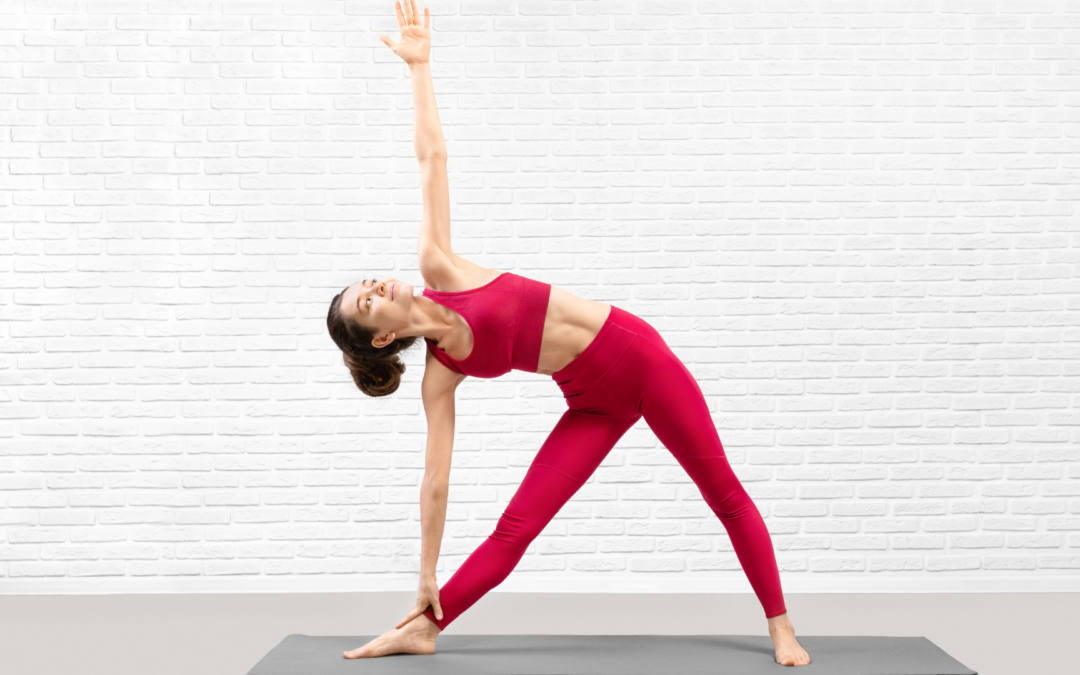10 Beginner Yoga Poses to Kickstart Your Practice
Embarking on a yoga journey can be both exciting and a bit overwhelming, especially with the plethora of poses and styles available. Yoga, with its rich history and diverse practices, offers something for everyone, whether you’re looking to increase flexibility, build strength, reduce stress, or just find a little peace in your day. If you’re new to yoga, starting with foundational poses is a great way to ease into the practice and build a solid base. Here, we’ll explore ten beginner-friendly yoga poses that are perfect for kickstarting your yoga journey.
And if you find yourself craving more guidance or looking for a community to practice with, consider exploring regular online yoga classes. They offer the flexibility to practice from home and access to a wide range of teachers and styles, making finding a routine that fits your needs easier than ever.
1. Mountain Pose (Tadasana)
Mountain Pose is often considered the foundation for all standing poses. It may look simple, but it teaches you to engage your entire body and improve your posture.
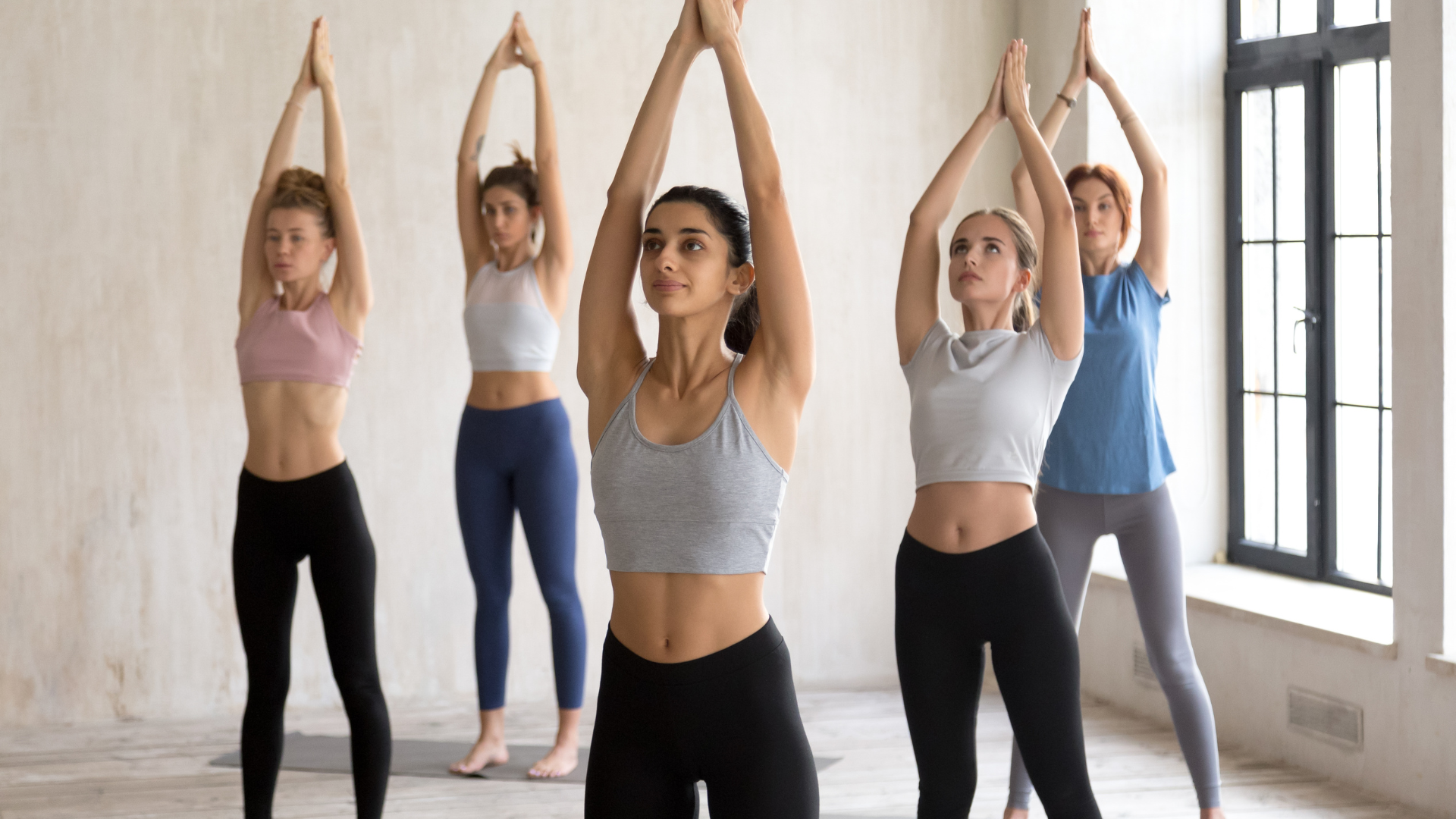
How to Do It:
- Stand with your feet together or hip-width apart, grounding your feet into the mat.
- Distribute your weight evenly between both feet.
- Engage your thighs, lift your kneecaps, and lengthen through your spine.
- Roll your shoulders back and down, and let your arms hang by your sides.
- Take a few deep breaths here, focusing on your alignment and the sensation of being grounded.
- Hold this pose for 30 seconds to 1 minute, or longer if you feel comfortable.
Benefits:
- Improves posture
- Increases awareness of body alignment
- Strengthens thighs, knees, and ankles
2. Downward-Facing Dog (Adho Mukha Svanasana)
Downward-Facing Dog is a staple in many yoga practices. It’s a great full-body stretch that strengthens the arms, shoulders, and legs while also calming the mind.
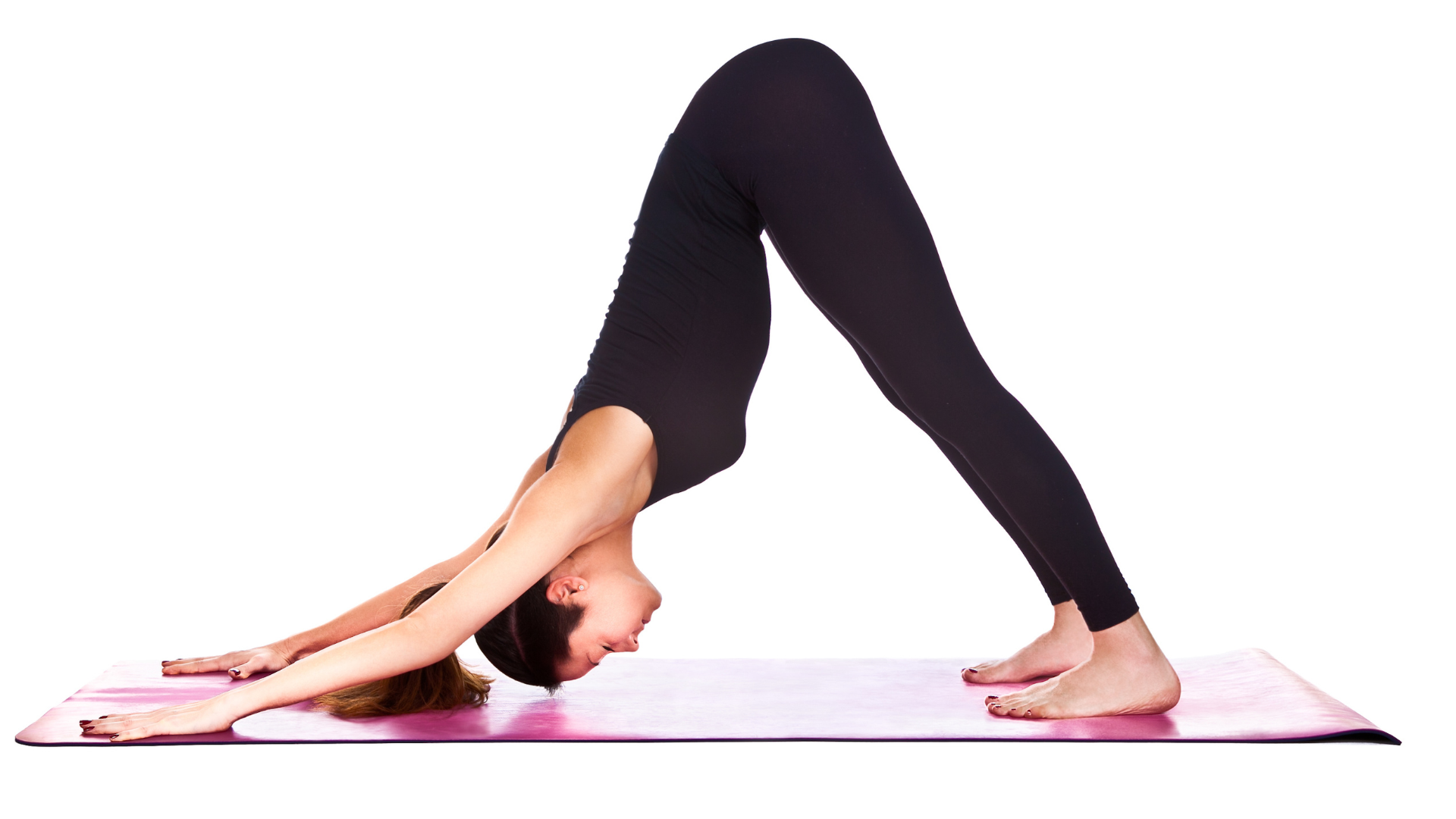
How to Do It:
- Start on your hands and knees, with your wrists directly under your shoulders and knees under your hips.
- Spread your fingers wide and press firmly into your hands.
- Tuck your toes under and lift your hips toward the ceiling, straightening your legs as much as possible.
- Keep a slight bend in your knees if your hamstrings are tight.
- Lengthen your spine and press your chest toward your thighs.
Benefits:
- Stretches the hamstrings, calves, and spine
- Strengthens the arms and shoulders
- Relieves stress and calms the mind
3. Child’s Pose (Balasana)
Child’s Pose is a gentle resting pose that helps to calm the mind and stretch the back, hips, and thighs. It’s often used as a resting position during yoga classes.
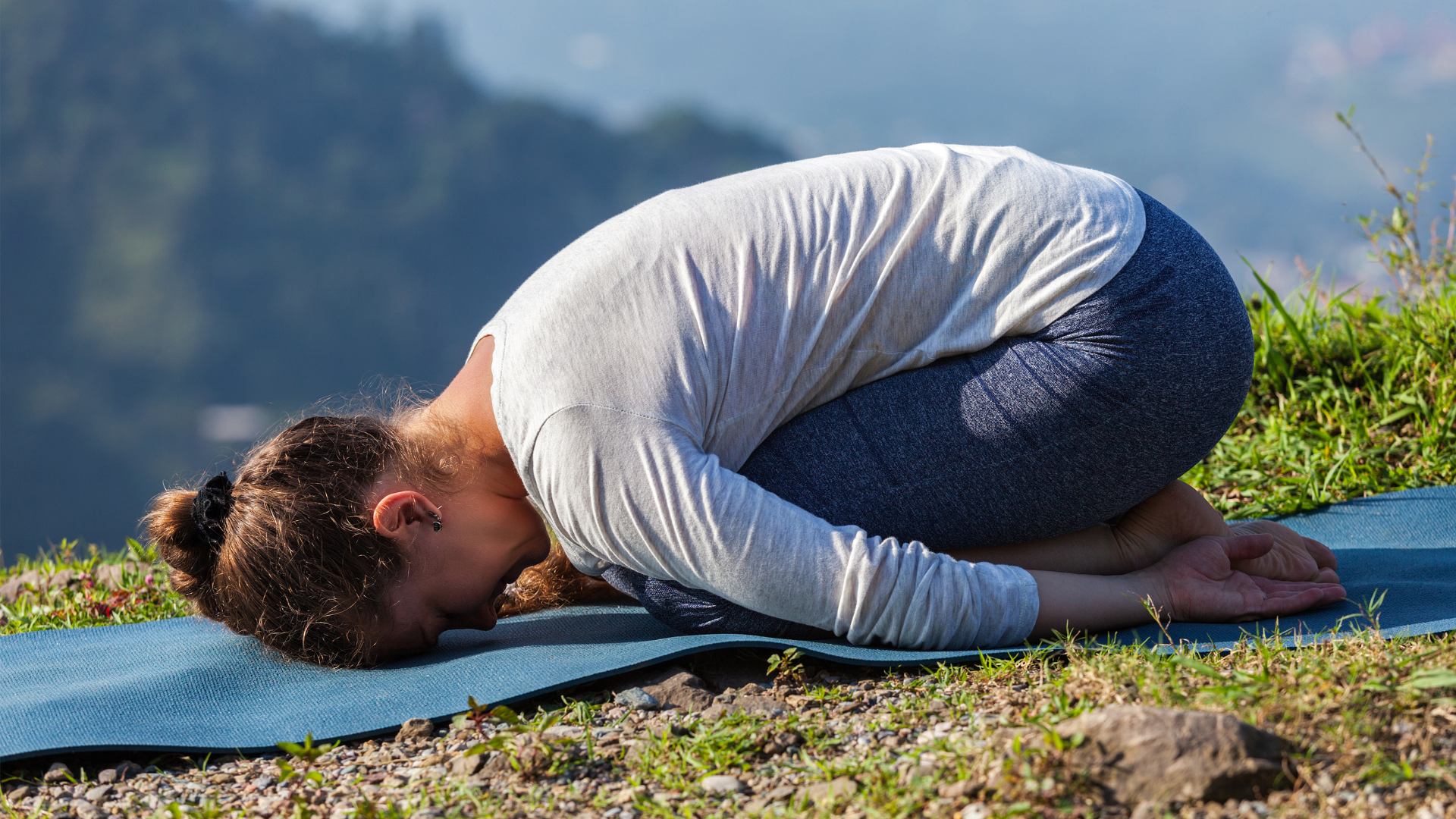
How to Do It:
- Kneel on the floor with your big toes touching and knees spread apart.
- Sit back on your heels and fold forward, bringing your forehead to the mat.
- Extend your arms in front of you or alongside your body with palms facing up.
- Relax your shoulders and breathe deeply.
Benefits:
- Gently stretches the hips, thighs, and ankles
- Calms the mind and relieves stress
- Alleviates back and neck pain when done with the head and torso supported
4. Cat-Cow Pose (Marjaryasana-Bitilasana)
Cat-Cow Pose is a gentle flow between two poses that warms up the spine and brings flexibility to the back and neck.
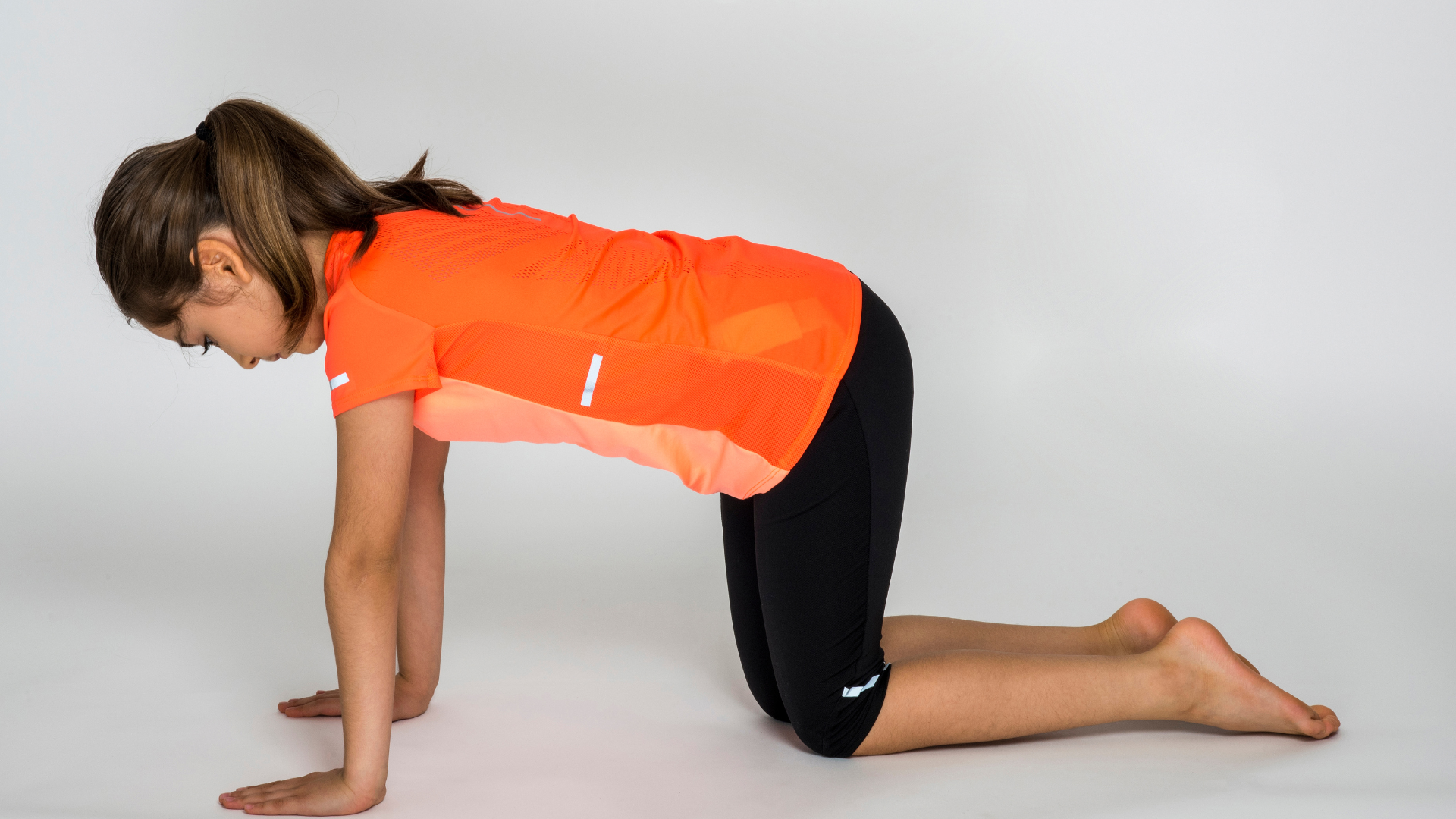
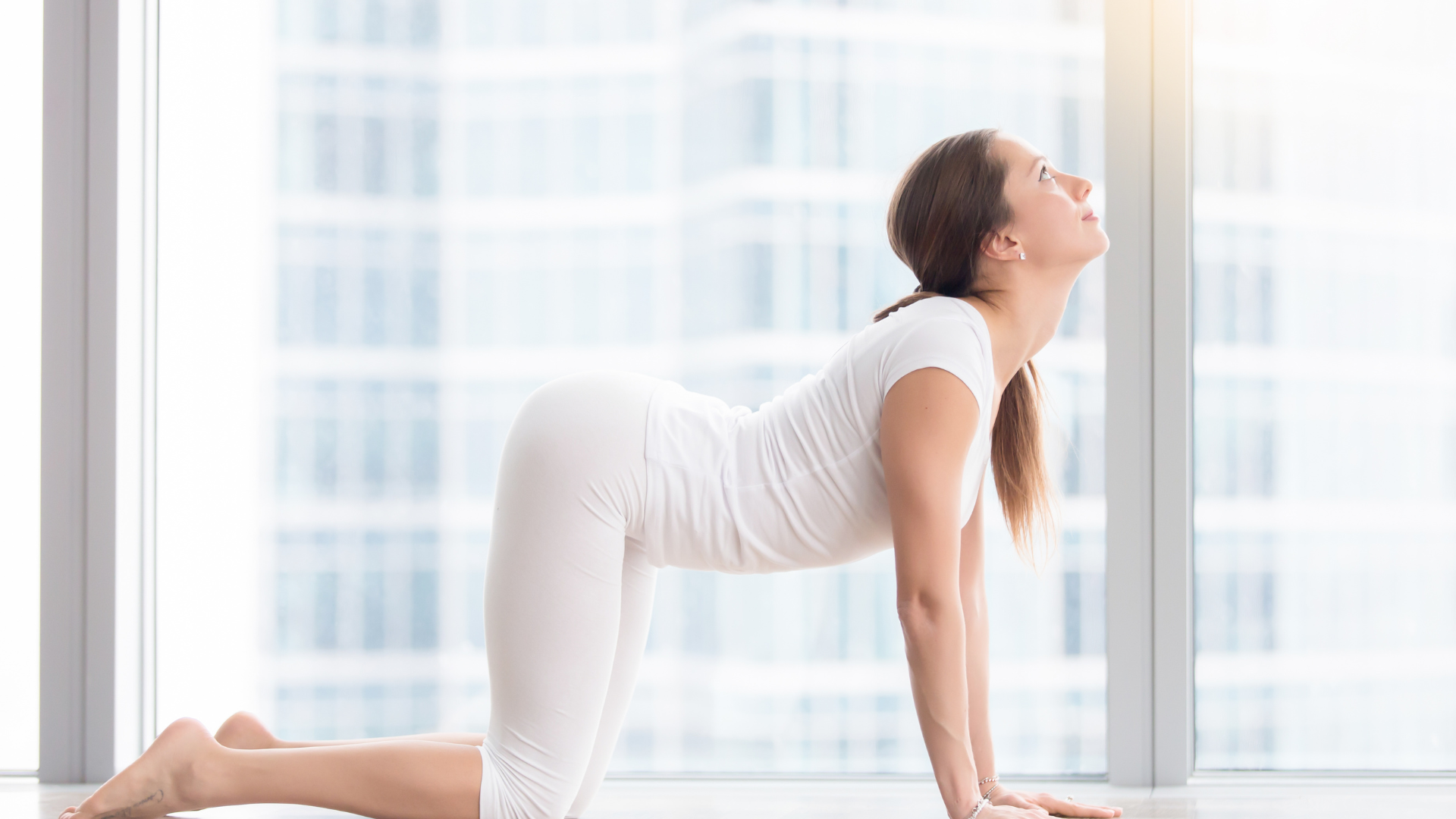
How to Do It:
- Start on your hands and knees in a tabletop position, with your wrists directly under your shoulders and knees under your hips.
- Inhale, drop your belly toward the mat, lift your chest, and look up (Cow Pose).
- Exhale, round your back, tuck your chin toward your chest, and tuck your tailbone under (Cat Pose).
- Continue to flow between these two poses with your breath.
Benefits:
- Increases flexibility in the spine
- Stretches the back and neck
- Massages and stimulates organs in the abdomen
5. Warrior I (Virabhadrasana I)
Warrior I is a powerful standing pose that builds strength and stamina. It stretches the front of the body while engaging the legs and core.
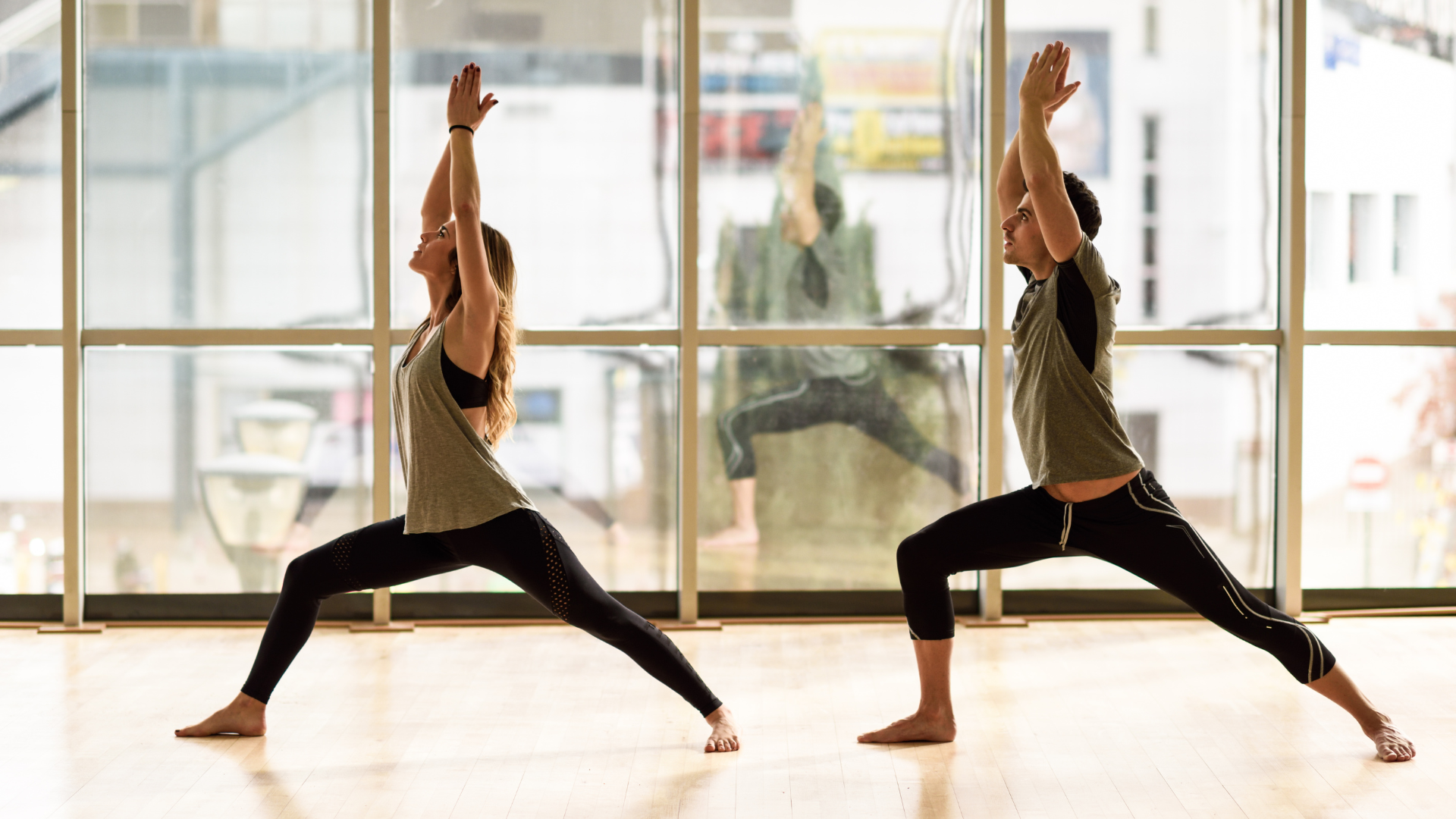
How to Do It:
- Stand with your feet hip-width apart and step one foot back, turning it out at a 45-degree angle.
- Bend your front knee, ensuring it is directly over your ankle.
- Raise your arms overhead, keeping your shoulders relaxed.
- Square your hips toward the front of the mat and look forward.
Benefits:
- Strengthens the legs, ankles, and arms
- Stretches the chest, lungs, shoulders, and groin
- Improves focus and balance
6. Warrior II (Virabhadrasana II)
Warrior II is another foundational standing pose that builds strength and endurance. It opens the hips and chest, encouraging deeper breathing.
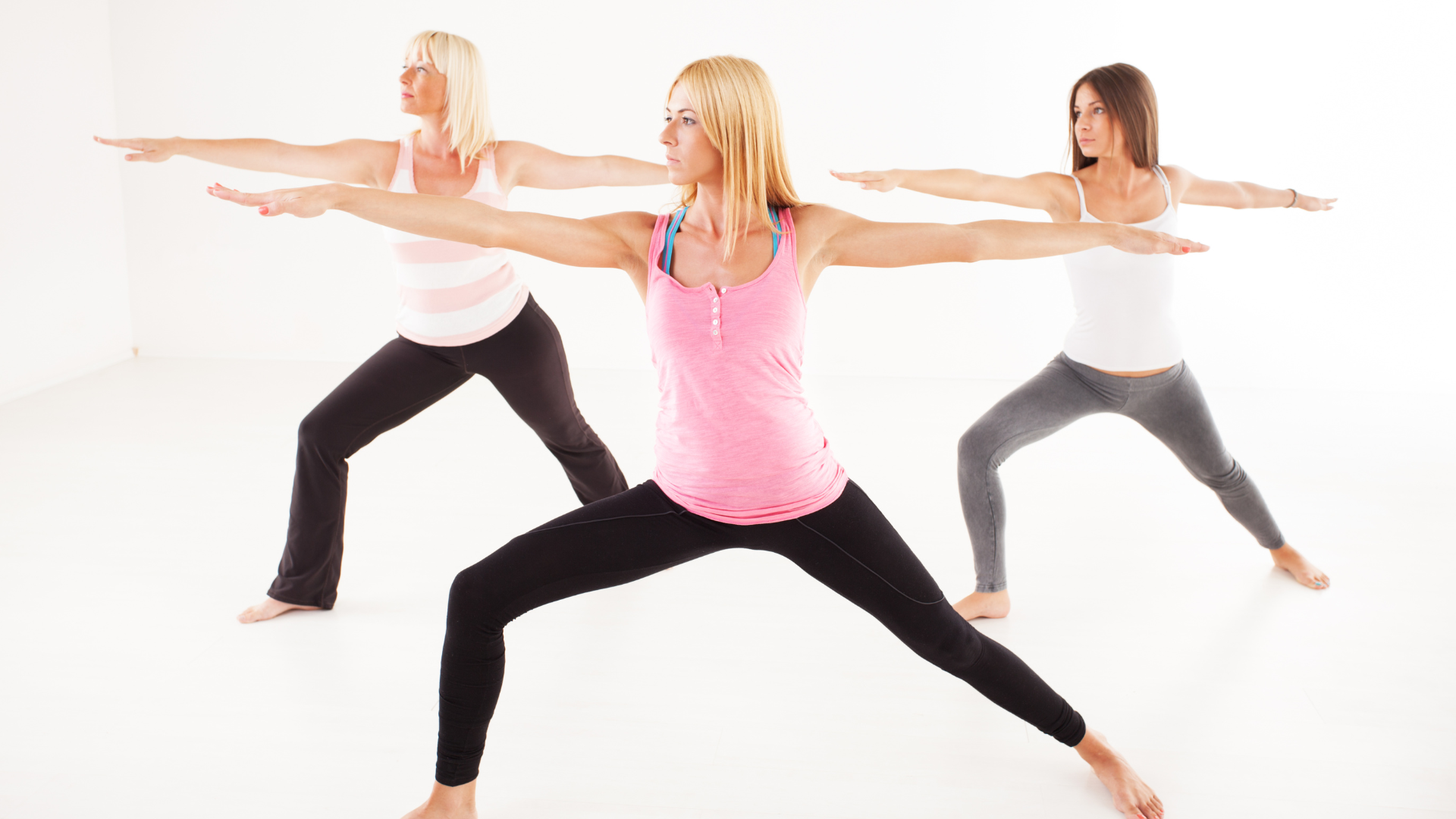
How to Do It:
- From Warrior I, open your hips and shoulders to face the side of the mat.
- Extend your arms parallel to the ground, with palms facing down.
- Bend your front knee over the ankle, keeping the back leg straight.
- Gaze over your front hand.
Benefits:
- Strengthens the legs and core
- Stretches the groin, chest, and shoulders
- Improves concentration and stability
7. Triangle Pose (Trikonasana)
Triangle Pose is a standing pose that improves flexibility and strength. It stretches the legs, hips, and spine while also opening the chest and shoulders.
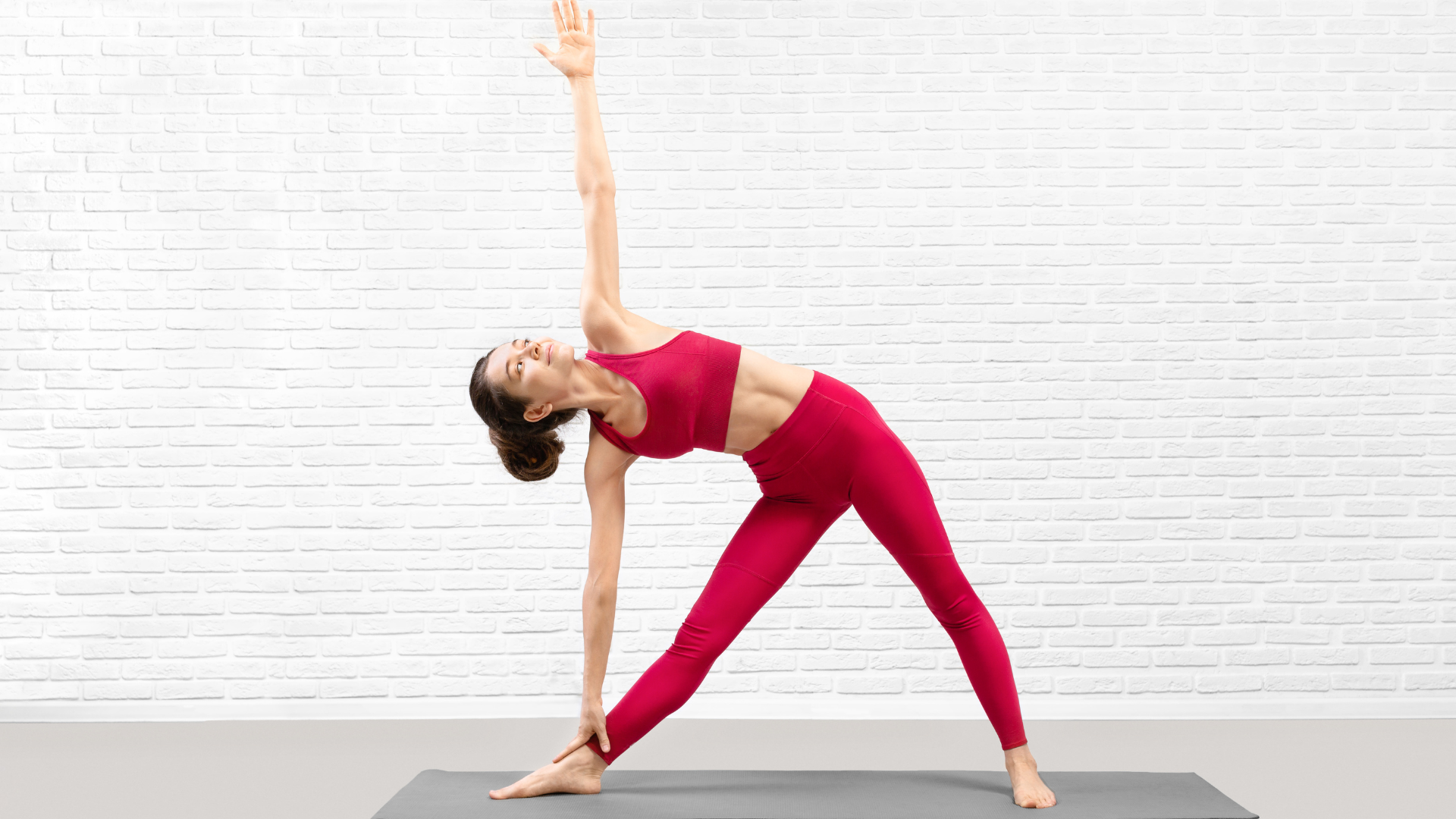
How to Do It:
- From Warrior II, straighten your front leg and reach your front hand forward.
- Lower your front hand to your shin, ankle, or the floor outside your front foot.
- Extend your other arm toward the ceiling, forming a straight line with your arms.
- Gaze up at your top hand.
Benefits:
- Stretches the legs, hips, and spine
- Strengthens the legs and core
- Opens the chest and shoulders
8. Bridge Pose (Setu Bandhasana)
Bridge Pose is a gentle backbend that stretches the chest, neck, and spine. It strengthens the back, glutes, and hamstrings, making it a great counterpose to sitting.
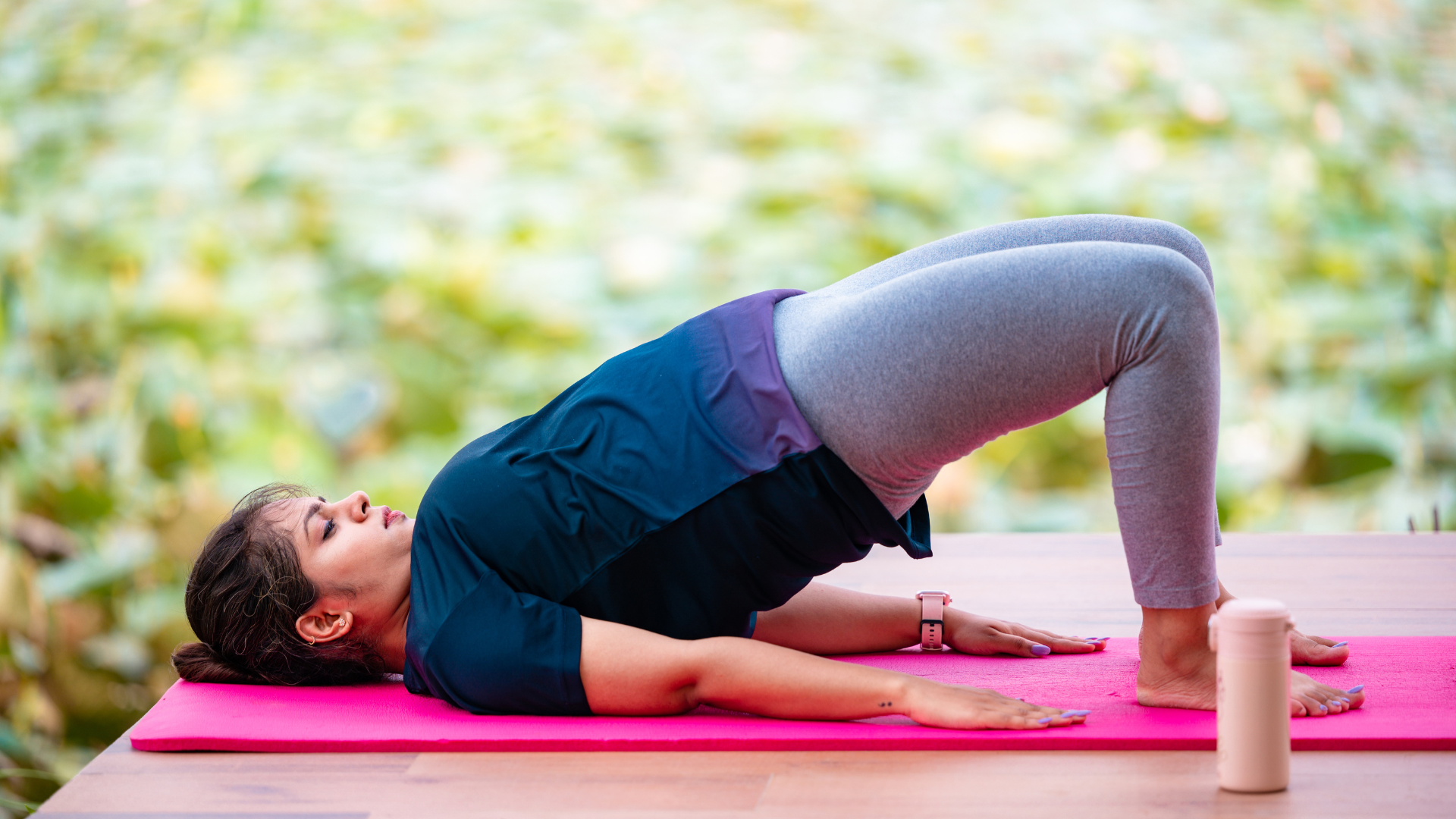
How to Do It:
- Lie on your back with your knees bent and feet hip-width apart.
- Place your arms alongside your body with palms facing down.
- Press into your feet and lift your hips toward the ceiling.
- Clasp your hands under your back, and press your arms into the mat.
Benefits:
- Stretches the chest, neck, and spine
- Strengthens the back, glutes, and hamstrings
- Improves circulation and stimulates the lungs and thyroid
9. Seated Forward Bend (Paschimottanasana)
Seated Forward Bend is a calming pose that stretches the spine, shoulders, and hamstrings. It’s a great pose for winding down after a yoga session.
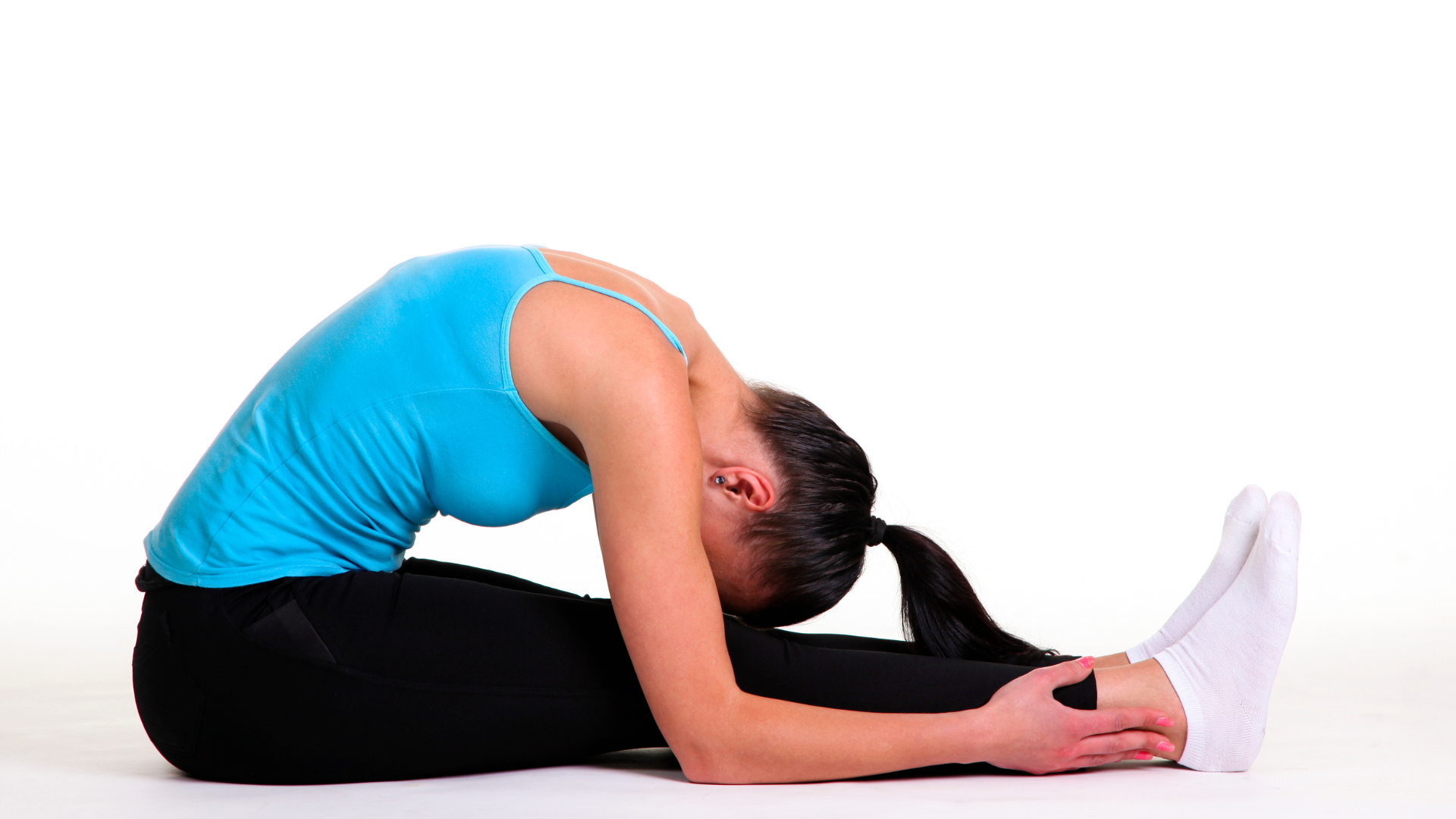
How to Do It:
- Sit on the floor with your legs extended in front of you.
- Inhale, lengthen your spine, and reach your arms overhead.
- Exhale, hinge at your hips, and reach forward, aiming to hold your feet or shins.
- Keep your spine long and avoid rounding your back.
Benefits:
- Stretches the spine, shoulders, and hamstrings
- Calms the mind and reduces stress
- Improves digestion and stimulates the liver and kidneys
10. Corpse Pose (Savasana)
Corpse Pose is often the final pose in a yoga class, designed for deep relaxation. It allows your body and mind to absorb the benefits of your practice.
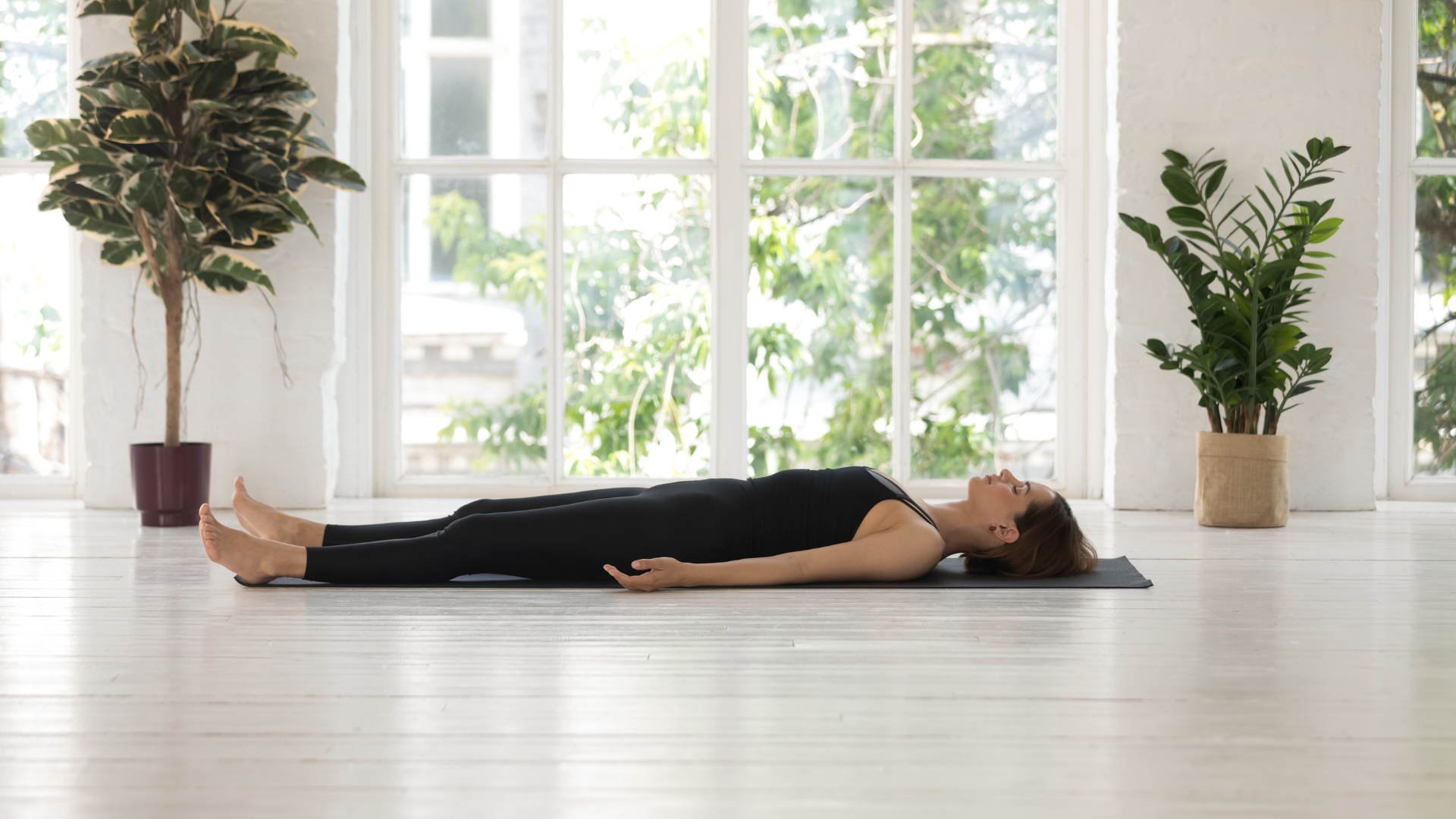
How to Do It:
- Lie flat on your back with your legs extended and arms resting at your sides, palms facing up.
- Close your eyes and take deep, slow breaths.
- Allow your body to completely relax, releasing any tension.
- Stay in the pose for several minutes, enjoying the stillness.
Benefits:
- Promotes deep relaxation and stress relief
- Calms the nervous system
- Helps to integrate the practice and balance the body and mind
Check out our blog “How Can You Incorporate Yoga into Your Busy Schedule?” for practical tips and strategies to fit yoga into your daily routine!
Conclusion
Starting a yoga practice can be an enriching experience, providing both physical and mental benefits. These ten poses are a great way to begin, offering a balanced introduction to the various aspects of yoga. Remember, yoga is a personal journey, and it’s important to listen to your body and move at your own pace.
If you’re looking for more guidance, consider exploring online yoga classes. Many platforms offer classes for beginners, allowing you to practice in the comfort of your own home while accessing a variety of teachers and styles. Whether you prefer a gentle introduction or a more dynamic flow, there’s something out there for everyone.
Inquiry
If you have any questions, please feel free to reach out. We’ll be glad to help!

